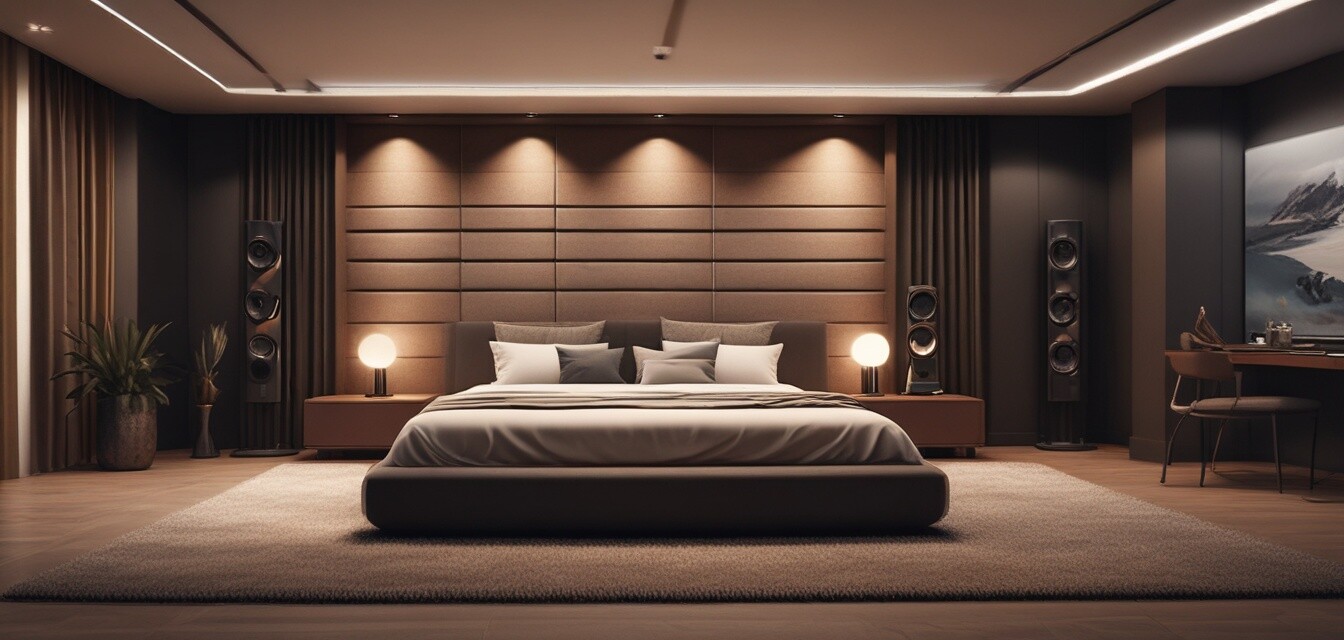
Understanding room acoustics for better sound
Key Takeaways
- Room acoustics play a crucial role in sound quality.
- Factors such as room shape, size, and furnishings affect acoustics.
- Proper treatment can significantly improve audio experiences.
- Effective speaker placement enhances sound quality.
- Investing in sound panels and carpets can create ideal listening environments.
When it comes to audio quality, many enthusiasts focus on equipment and speakers, but an often overlooked component is the acoustics of the room itself. Understanding how sound interacts with your space is essential for achieving optimal sound quality.
What are room acoustics?
Room acoustics refer to how sound behaves within a room. This behavior is influenced by various elements, including the size, shape, and materials present in the space. Properly designed acoustics can enhance our listening experience, while poor acoustics can hinder it, creating muddled or overly bright sound.
Factors affecting room acoustics
Several factors affect room acoustics, including:
| Factor | Impact |
|---|---|
| Room Size | A larger room can create longer reverberation times, while smaller rooms can create a more intimate sound. |
| Room Shape | Irregularly shaped rooms can diffuse sound waves, reducing unwanted echoes. |
| Materials | Hard surfaces (like walls and floors) can reflect sound, while soft surfaces (like carpets and curtains) absorb sound. |
| Furniture Placement | Placement of furniture can help diffuse sound waves or create reflection points that enhance audio clarity. |
Understanding sound waves and reflection
Sound waves travel in all directions, bouncing off surfaces and interacting with the environment. Their behavior creates reflections, which can lead to different sound experiences in different spots of the room. This is where room acoustics come into play.
The sound produced by speakers can be affected by:
- Reflections creating echoes or delays.
- Absorption of sound waves by various materials.
Measuring the acoustics
To effectively analyze your room's acoustics, consider these measurements:
- Selective listening: Sit in various locations to identify sweet spots where sound is most balanced.
- Reverberation time: Use a microphone and software to measure the time it takes for sound to decay in your room.
Tips to optimize your room acoustics
Improving room acoustics is accessible with some practical steps. Here are some tips to enhance the sound quality in your space:
Beginner tips for better sound
- Consider adding sound absorption materials, like acoustic panels and rugs.
- Place speakers away from walls to reduce unwanted reflections.
- Use bookshelves and furniture to diffuse sound waves effectively.
- Utilize curtains or drapes to minimize high-frequency reflections.
- Experiment with room layout to find the best sound setup.
High-performance speakers and positioning
Regardless of how well you've treated your room acoustically, positioning your speakers is pivotal:
- Ensure speakers are at ear level when seated.
- Position speakers in a triangle formation with your listening position.
- Consider the distance between speakers to avoid overlap or cancellation of sound.
Troubleshooting common acoustic issues
If you are experiencing issues despite your optimization efforts, here are some troubleshooting tips:
- If sound is overly bright, consider adding absorption materials.
- If sound is muddled, assess speaker placement and furniture layout.
- Analyze the overall room shape to ensure it isn't causing problematic reflections.
The importance of experiments
Acoustic treatment is not a one-size-fits-all solution. It's essential to actively experiment and adjust your space according to your specific taste and needs. Trust your ears, and allow them to guide your adjustments.
Further resources on room acoustics
For those interested in diving deeper into this topic, check out our other articles on buying guides and explore the best equipment for optimizing your sound experience.
Pros
- Improved audio clarity and balance.
- Better overall listening experience.
- Increased enjoyment of music and movies.
Cons
- Potential cost of acoustic treatment materials.
- Time-consuming adjustments and experiments.
With a solid understanding of room acoustics and by implementing the tips above, you can dramatically enhance your audio quality. Don’t overlook how important your space is in shaping the sounds you love. For more insights, feel free to explore our other categories, including Bluetooth speakers and home theater systems to find products that fit your optimized listening environment.